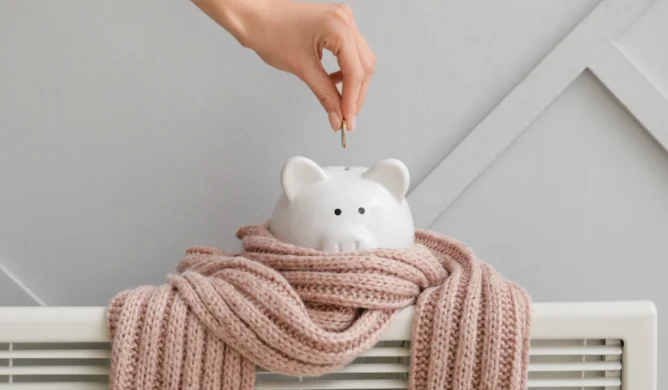Time to read : 4 Minutes
With rising interest rates and rental increases stinging so many bank balances at the moment, the prospect of facing a chilly winter is enough to put energy expense-related fear into the (increasingly cold) hearts of budget-conscious Australians. When it comes to cost-effective heating tips for your home, choosing the ideal heating appliance to suit your circumstances is a good start. And whether you’re renting, or in your own home, there are positive steps you can take to help reduce the heat on your next bill, without reducing the warm cosiness of your living space.
Portable electric heaters
No budget to install reverse-cycle aircon? Or renting/share-housing and need heating that moves when you do? A portable electric heater may be your ideal choice.
The obvious benefit is the lack of installation costs. Prices that start from as little as $30 is another bonus. But while they are cheap to buy and handy for portability, these little heaters are not particularly energy efficient and are best for small spaces. If you’re part of a share house, with portable heaters running in multiple individual bedrooms, it’s worth having a discussion to see how the different heaters compare and how long they are running to help you come to an agreement about bill equity.
Although the oil column heater variety are cheaper to run than fan heaters, they don’t give the same cosy blast of warmth you might prefer, and take longer to heat up and radiate effective heat.
Key point: A portable electric heater can cost three times as much as an average reverse-cycle air conditioner.
Reverse-cycle air conditioner
If it’s not your home, installing one obviously isn’t an option, but if you are a homeowner and have the budget (possibly up to $15,000 for ducted reverse-cycle heating) to renovate your home heating, these beauties may be a worthwhile long-term investment that have the added benefit of giving comfort all year long.
When it comes to cost-effective heating to get you through the cold, dark days of winter, it’s by far the most affordable option to run.
Gas heating
If you’ve already got one in your house, it’s good to know they are not that expensive to run (although the right electrical heating appliance will be most cost-effective when it comes to home heating).
But for anyone considering installation of new heating, the sustainable switch away from gas is definitely the trend.
There are good reasons, too.
The need for regular servicing to ensure gas heaters do not become a health hazard is critical – and it’s an additional (but incredibly necessary) expense.
Plus, with the price of gas increasing – and the fact that it is a non-renewable resource – the sooner you can make a switch away from gas, the better.
Insulation keeps heat in
Yes, you can toss an extra layer of clothing on, or you can take steps to insulate your home more effectively. To create cost-effective heating – no matter what appliance you have – there’s really no better tip.
The science doesn’t lie.
As much as 35% of your home's warmth can be lost without proper insulation. And that means your expensive winter energy bills will be in freezing vain. (Insulation also keeps your home cooler in summer, of course.)
But, depending on your circumstances, insulation is not in everyone’s hands, so you’ll need to take more grassroots measures, such as door snake draught-stoppers to stop those wintry breezes, covering floors with rugs, closing curtains and blinds to protect against cold windows, and keeping individual rooms closed when you want localised heat to have a greater impact.
Make the most of the heat you have
No matter what heating you have access to, a ceiling fan turned on in reverse (if it has that functionality) can help. Again … thanks, science! All that rising hot air being pushed down can make a noticeable difference in temperature and may mean less running time is required for heating appliances.
When the sun is out, its heat-giving powers (even on a winter’s day) can help. If you’re closing curtains for insulation purposes elsewhere, focusing on one window that gets the most afternoon sun and letting it in, can add some natural heat. And, of course, if you have the budget (and your own home) to help you harness the sun’s energy in a sustainable way, exploiting available rebates to help fund installation of solar panels might be a smart move – especially if you plan to live in your home for years to come.
The bottom line
Your living arrangements will make a significant difference to your ability to access cost-effective home heating. If you own, you will have more options to take control than if you rent. But significant changes will only be possible with an initial investment.
With some thoughtful planning and a few lifestyle adjustments – as well as comparing energy providers to access the best possible deals – you can reduce your home heating bills and save.
Go deeper: What is the cheapest way to heat your home this winter?
Financial disclaimer
The information contained on this web page is of general nature only and has been prepared without taking into consideration your objectives, needs and financial situation. You should check with a financial professional before making any decisions. Any opinions expressed within an article are those of the author and do not specifically reflect the views of Compare Club Australia Pty Ltd.
